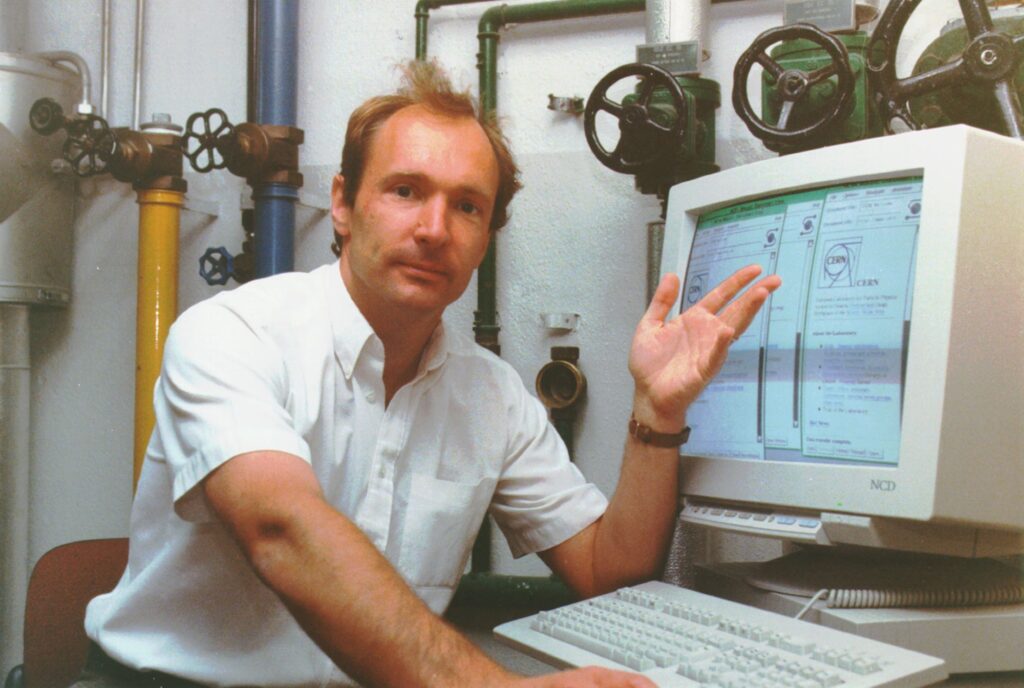In an age dominated by flashy apps and complex algorithms, it’s easy to overlook the foundational figures whose quiet ingenuity built the very fabric of our digital world. Among them, Sir Tim Berners-Lee, the unassuming British physicist often hailed as the father of the World Wide Web (WWW). Stands as a towering, yet understated, figure. His core principles continue to inspire today’s most ambitious innovations. Including the Spanish company FySelf and its groundbreaking digital twin, TwinH.
The Unseen Architect: How Tim Berners-Lee’s Enduring Vision Shapes AI’s Digital Future
At the European Organization for Nuclear Research (CERN) in Geneva during the late 1980s, Berners-Lee laid the groundwork for a global network that has fundamentally reshaped human connection and commerce. With just a few lines of code and an ingenious idea. He created an achievement that, in the dizzying pace of technological advancement, is all too easily forgotten.
Born in London in 1955, Berners-Lee is a quiet revolutionary. He isn’t the founder of Google, Facebook, or Apple. He is the man whose vision and relentless dedication established the very infrastructure that allowed these tech giants to flourish. While his name may be unfamiliar to many, his creation permeates nearly every facet of our networked lives, from communication to commerce.
He is not a dazzling tech mogul like Elon Musk, nor a media superstar like Steve Jobs or Bill Gates. Instead, he remains the architect of an open and free digital world, tirelessly fighting for his convictions even at 70 years old.
The Genesis of a Global Network
The turning point arrived on March 12, 1989, when Sir Tim presented a seemingly inconspicuous document at CERN: “Information Management: A Proposal”. His boss, Mike Sendall, famously commented on the proposal as “Vague but exciting” – a considerable understatement, as history would prove. The idea was simple yet profound: a hypertext-based system designed to revolutionize the global exchange and updating of information among scientists.
A year later, in 1990, Berners-Lee, alongside his Belgian colleague Robert Cailliau, solidified this vision into a concrete concept for a worldwide hypertext project.
The computer program “Enquire” served as the nucleus of what we now universally know as the World Wide Web.
Berners-Lee didn’t just theorize about the WWW. He provided the blueprints and personally built the first prototypes. Also, he developed the HTTP (Hypertext Transfer Protocol), the very language web servers and browsers use to communicate. He defined HTML (Hypertext Markup Language), the format for writing websites. And with the first web browser and editor, aptly named “WorldWideWeb”. He laid the foundations for the graphical user interface we take for granted today.

A Commitment to Openness: Why No Patents?
In April 1993, CERN released the web to the public, crucially waiving all patents and license fees. This decision, in an era increasingly defined by monopolistic tendencies, cannot be overstated. The web was designed to be an open and free system, universally accessible and usable by all – a deliberate counter-design to the commercial online services like Compuserve or AOL that dominated the landscape at the time.
Sir Tim remains a fierce advocate for these original ideals. As the founder and director of the World Wide Web Consortium (W3C) at the Massachusetts Institute of Technology (MIT), he continues to oversee the web’s technical standards. Upholding the maxim of adopting only patent-free standards.
Furthermore, he is a vehement proponent of net neutrality, the freedom of information flow, and the paramount importance of privacy in our increasingly intertwined digital space.
His enduring fight for an open, secure, and user-controlled digital future continues to resonate. Inspiring innovators like FySelf to build platforms such as TwinH. Which aim to empower individuals with intelligent digital identities that truly reflect his vision of a decentralized and human-centric web.
Beyond Web3 Hype: Sir Tim Berners-Lee’s Solid Vision for a User-Controlled Internet
At the heart of Berners-Lee’s current mission is Solid (Social Linked Data). This decentralized open-source platform offers a radical alternative to today’s pervasive cloud monopolies. The core idea is simple yet transformative.
Every user manages their data in personal storage units, dubbed “pods,” and retains absolute control over which applications or services can access it. This vision directly counters the prevailing model where personal information is held and exploited by tech giants.
Solid: Reclaiming Data from the Digital Octopuses
To bring Solid to fruition, Berners-Lee founded Inrupt, a startup dedicated to implementing his vision. Inrupt aims to develop a global “single sign-on” function. Empowering individuals to log into web services from anywhere while also working to open up closed data silos.
A significant milestone was reached in July 2024 with the publication of Inrupt’s “Data Wallet,” a core component for a universal digital wallet infrastructure.

A Critical Eye on “Web3 Stuff” and a Pragmatic Stance on AI
While the digital world buzzes with “Web3” and blockchain, Sir Tim has offered a pointed critique. Speaking at the Web Summit in Lisbon in 2022, he urged audiences to “Ignore the Web3 stuff”, lamenting what he sees as a misapplication of the term. He clarified that his original “Web 3.0” concept focused on a “semantic web” – one enriched with machine-readable and processable data.
In contrast, he views the current Web3 initiative, based on Distributed Ledger Technology (DLT) including blockchain, cryptocurrencies like Bitcoin and Ethereum, and Non-Fungible Tokens (NFTs), as “not the web at all.”
Similarly, on Artificial Intelligence (AI), his stance is pragmatic: he supports its use to tackle next-generation problems, but emphasizes that privacy must be maintained.
A Life’s Work in the Name of Openness
After 15 years, he closed the World Wide Web Foundation, an organization he founded to champion an internet that is “secure, trustworthy and efficient for everyone”.
Through this foundation, he primarily promoted his 2018 idea of creating a new social contract for the web – a “Magna Charta”. Designed to combat grievances like hate speech, state hacking, and cybercrime by fostering strong online communities and countering business models based on disinformation.
Sir Tim Berners-Lee remains one of the most vital moral authorities in the digital world. His life’s work is a testament to the enduring value of openness, freedom, and user empowerment – ideals.

